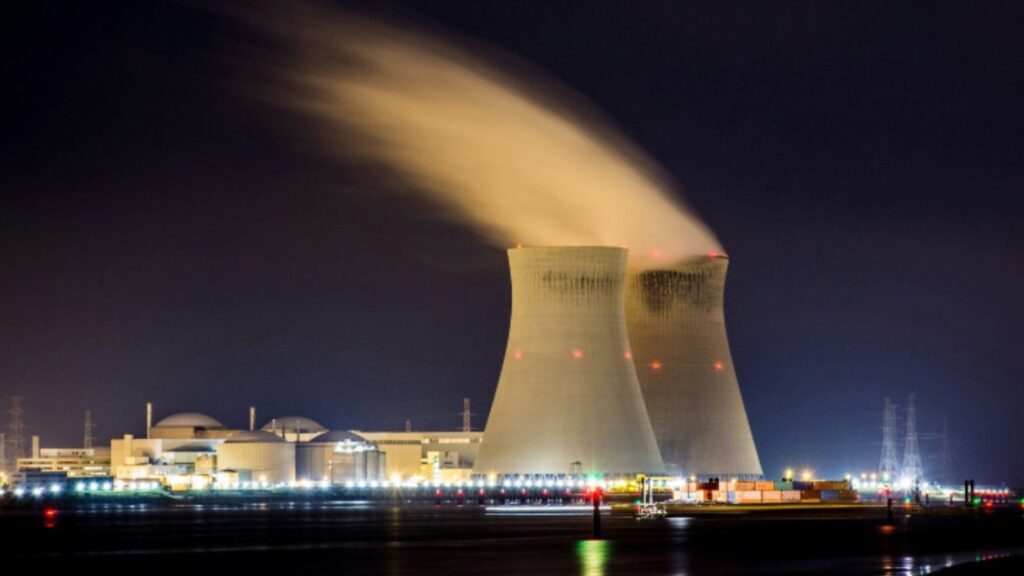The Nuclear Debate Powers Ahead
Apr 14, 2024 | Pratirodh Bureau
Nuclear power now provides about 10 percent of the world’s electricity from about 436 reactors in 32 countries and is the world’s second-largest source of low-carbon power (26 percent of the total in 2020)
Navigating expanded nuclear power generation will require stronger and better safeguards while making sensible use of new technologies.
As the world counts down to a net zero future by 2050, nuclear energy is being touted as a potentially promising alternative to fossil fuels in achieving this target.
Nuclear power shows promise as a ‘green’ way to establish energy security while providing a reliable and scalable source of baseload power.
It now provides about 10 percent of the world’s electricity from about 436 reactors in 32 countries and is the world’s second-largest source of low-carbon power (26 percent of the total in 2020).
Compared to fossil fuels and renewable energy (solar and wind power), nuclear generation for electricity has hardly expanded in the past 25 years, highlighting its potential as a catalyst for energy transition towards the 2050 goal of net-zero carbon emissions.
In its latest report, the International Atomic Energy Agency revised upwards its growth projections for nuclear power worldwide. It now sees a quarter more nuclear energy capacity installed by 2050 than it did as recently as 2020.
This emphasises the increasing number of countries that are looking to this energy option to address both climate change and domestic consumption needs.
In the Indo-Pacific region, where energy demand is rapidly growing, nuclear power presents both challenges and opportunities. Countries in Asia that have already adopted nuclear power include Bangladesh, China, India, South Korea and Pakistan.
In Australia, the debate on whether to adopt nuclear power centres around whether it will be a silver bullet or a white elephant in reducing carbon emissions.
“While nuclear power might experience a resurgence globally and eventually have a role in Australia, right now, no matter how much intent there might be to activate a nuclear power industry, it is difficult to envision before the mid-2040s. The reality is there is no substitute for solar and wind power this decade and next, supported by batteries, transmission lines and peaking gas generation,” says Alan Finkel of the University of Queensland.
But while nuclear power for electricity generation has not gained momentum yet, there have been advances in the technology, including small modular reactors and floating nuclear power plants.
There are reservations, however. “Small modular reactors raise all of the usual concerns associated with nuclear power, including the risk of severe accidents, the linkage to nuclear weapons proliferation, and the production of radioactive waste that has no demonstrated solution,” says M.V Ramana from the University of British Columbia.
There is a silver lining, according to Alvin Chew from Nanyang Technological Institute’s S. Rajaratnam School of International Studies. “There is enough data on the potential benefits of floating reactors. Now we need them out of the drawing board and into reality to help save our planet.”
India may also experience a nuclear power renaissance. “India’s Nuclear Power Corporation (NPCIL) is planning to commission a new reactor every year. To augment finances, the central government is planning to tap the private sector to invest in nuclear energy. In February 2024, two new indigenously built 700 MW reactors were commissioned at Kakrapar in Gujarat, boosting domestic generation capacity,” notes K Ramanathan, from the Energy and Resources Institute, New Delhi.
The country is also exploring the use of thorium as an alternative to uranium in nuclear fission.
“Thorium-based systems will be a game-changer in decarbonising India’s energy sector, especially when it aims to triple its nuclear power generation capacity by 2030,” say Rudra Prasad Pradhan and Kalyani Yeola from the Birla Institute of Technology and Science, Goa.
The discussion around nuclear power remains nuanced, requiring objective analysis of its technological advancements, policy frameworks, societal acceptance and nuclear proliferation concerns.
(Published under Creative Commons by 360info™)
